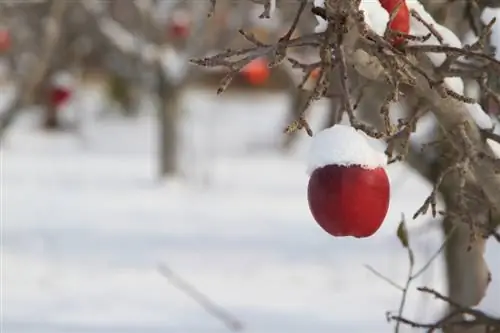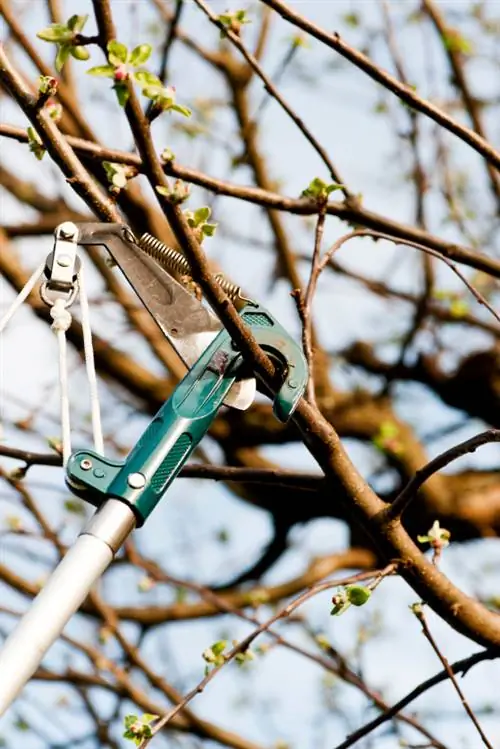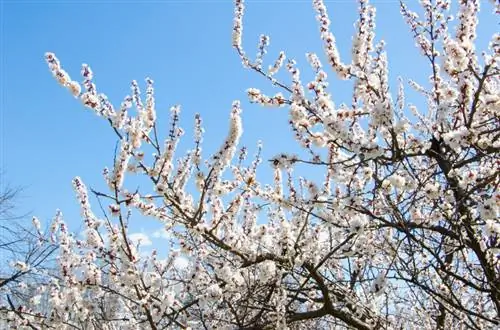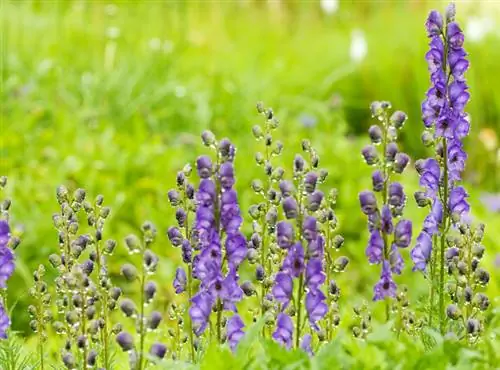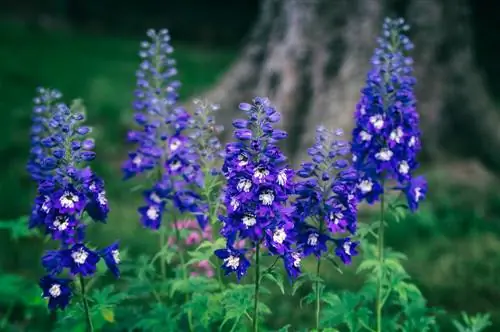- Author admin [email protected].
- Public 2023-12-16 16:46.
- Last modified 2025-01-23 11:20.
If monkshood is sown in a suitable location in the garden, it will thrive even without extensive care. Apart from the occasional application of a little irrigation water and fertilizer during the flowering period, only pruning the monkshood requires some work.

When and how should you cut monkshood?
Pruning monkshood should be done after the flowering period in October by cutting back withered flowers and stems to the ground. Wear gardening gloves and use clean, sharp tools. Division of the plant is possible in spring or autumn to rejuvenate it.
Wear gloves for all care procedures
Monkshood is one of the few plants that have a toxic effect on the body, and not just when taken orally. Therefore, you should not only wear gardening gloves as a precaution when sowing the poisonous seeds, but also when removing wilted flowers and cutting back the stems. Even on areas of skin without injuries, symptoms of poisoning such as numbness and an unpleasant burning sensation can sometimes occur. To avoid accidental contact, the already very tall monkshood is usually planted in the middle of perennial beds.
The right pruning for monkshood
Monkshood is a perennial plant that survives the winter in the ground. Pruning to limit the size of monkshood is therefore not necessary, as all above-ground parts of the plant die off towards the end of the growing season anyway. Some gardeners only cut monkshood back to the ground in spring, but the plant's withered stems don't look particularly attractive. Therefore, the main time for pruning is in October, when all the flowers have withered. When pruning monkshood, pay attention to the following things:
- wear gardening gloves for safety reasons
- work with clean and sharp garden tools (€14.00 on Amazon)
- cutting out wilted flowers directly prevents the formation of particularly poisonous seeds
- careful disposal of the cutting material away from children and pets
Rejuvenate the plants through division
If the individual monkshood clumps in the garden become too large for you, you can dig them up in the spring when budding begins and divide them with a sharp spade. Wear gloves when doing this as the roots of the plant are poisonous. Division every four to five years is also recommended to regularly rejuvenate the plants. If necessary, division is also possible in autumn or, in frost-free weather, generally between October and March.
Tip
If you want to cut off individual monkshood inflorescences as cut flowers for the vase, then you should not wait until all of the individual flowers have completely bloomed. If you cut with around 30% of the individual flowers open, you will achieve optimal durability in the flower vase.


